Colombia’s 11 most exotic fruits, like passion fruit
Colombia makes a great impression on all its visitors, but one of the country's most surprising features is the variety of its fruit.
Colombia is a haven for some of the world’s most exotic fruits and a stroll through a grocery store amazes many a visitor who can only name half the fruit on the shelves. Many of these fruits are “superfruits” with incredible health benefits. Here are some of the nation’s favorites:
1. Maracuyá (Passion fruit)
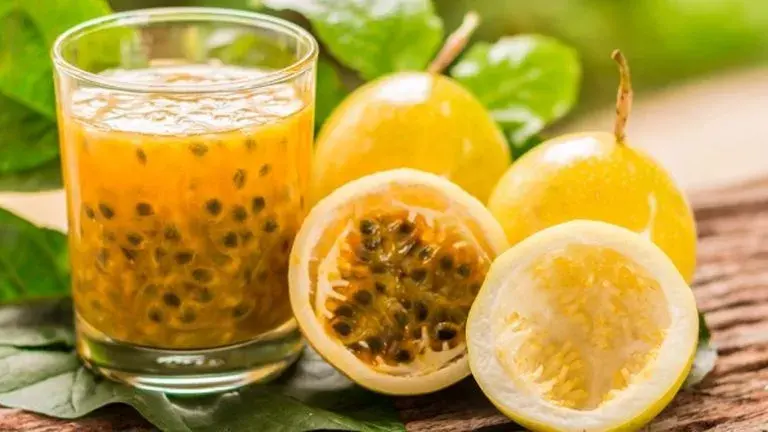
Colombia is passion and maracuyá is the country’s favourite passionfruit, a wrinkly, oval variety most commonly consumed in juices or made into a deliciously tart ice-cream. To prepare, cut the maracuyá open and remove the seeds, which are covered in jelly. Maracuyá is a natural sedative and a rich source of Vitamin C. It’s also thought to aid digestion. Maracuyá is best in juices and smoothies and makes for a delicious ice-cream flavor.
2. Gulupa
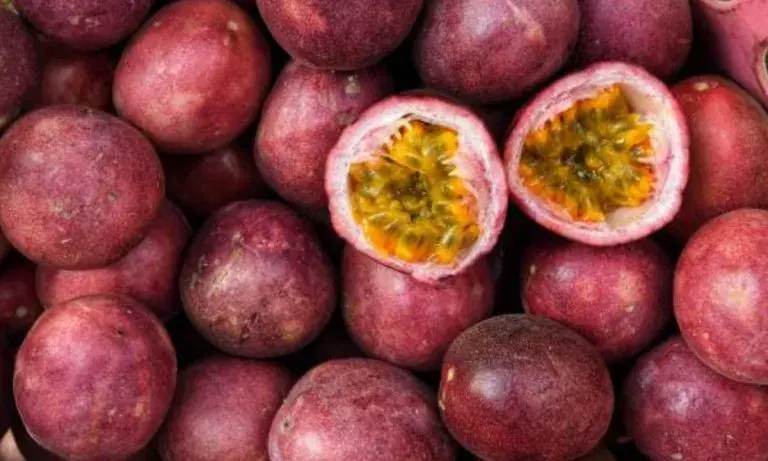
Gulupa is maracuyá’s lesser known cousin, but this passionfruit is just as delicious and it’s nutritious too (the fruit’s sedative element is even said to help regulate dreams). You can tell when gulupa is ripe, because its dark purple skin becomes wrinkled. Besides being an excellent source of Vitamin C, gulupa is thought to help control tension too. Gulupa is ideal in juices, smoothies and as a base for sauces.
3. Uchuva (Golden Berry)
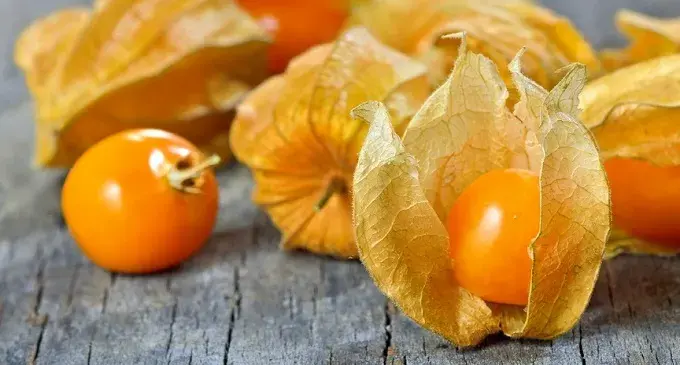
Uchuvas are small and yellow. They contain flavonoids, which kill stomach parasites and also aid digestion. Some doctors even claim uchuvas may help prevent colon and stomach cancers. Strangely, they are also said to aid the optic nerve and are sometimes used to treat mouth and throat infections too – which must make them Colombia’s most diverse health fruit. Uchuvas or Golden Berries are at their best when you prepare a juice or stewed with honey.
4. Zapote (Sapota)
Zapote is one of Colombia’s toughest fruits, being fast growing, wind and drought resistant and able to grow in dry, arid regions. The fruit can have a laxative effect, being high in dietary fibre but it is also rich in tannin, which is everything from an anti-inflammatory and anti-viral to an aid for gastritis and irritable bowel syndrome. Zapote is full of minerals and antioxidants too. It’s great raw with a bit of sugar or as a basis for a juice or smoothie.
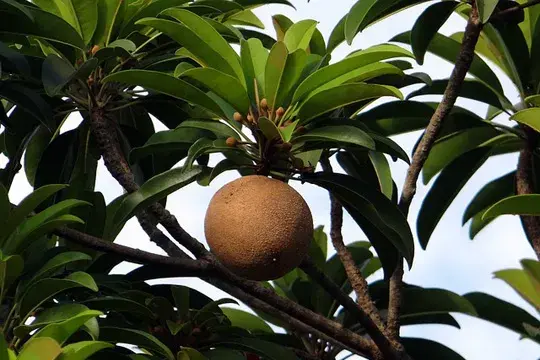
Photo: Pixabay
5. Pitaya (Dragon fruit)
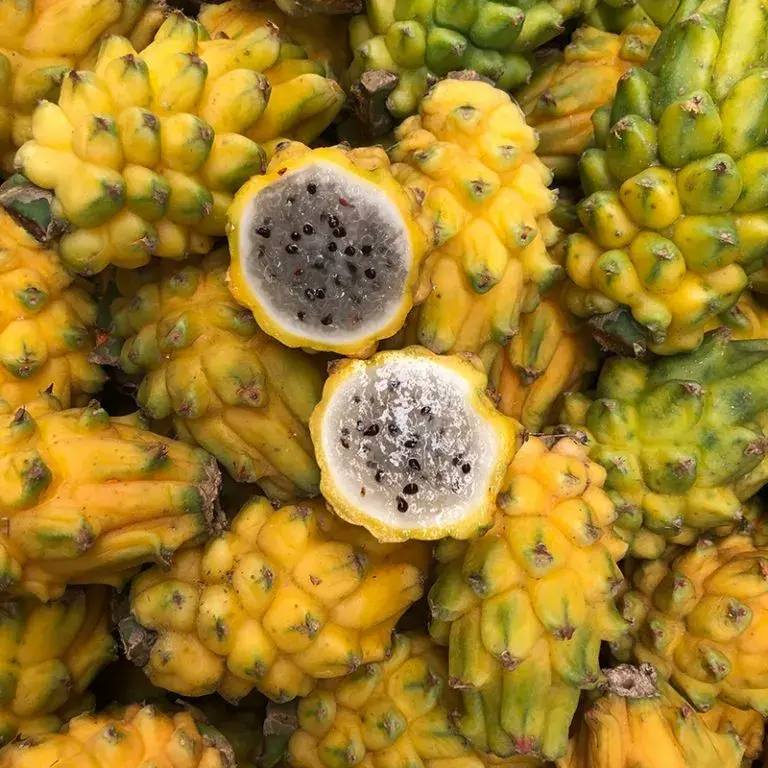
Pitaya, or Dragon Fruit, is a brilliantly-coloured fruit, similar to the melon or kiwi in flavour. Its skin can be red or yellow in colour, and the inside white or red. The pitaya has some incredible health benefits too. It’s said to help prevent memory loss and some cancers. Diabetics have also been known to eat pitaya to control their blood glucose levels. It’s usually eaten raw, this is a true Colombian exotic fruits
6. Mangostino (Mangosteen)
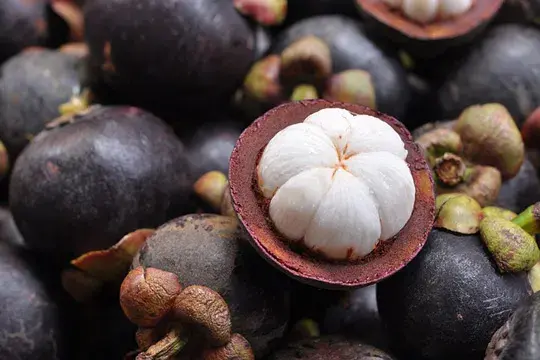
Photo: Pixabay
Mangosteen’s purple skin may be inedible, but its soft, white inside has a sweet, tangy flavour. It’s known as “Queen of the Fruit” after Queen Victoria, the 19th century English monarch, supposedly offered a small fortune to anyone who could bring her the fruit to taste. Restrictions on imports in some countries mean mangosteens can still fetch a high price overseas. It can be added to juices, smoothies, sweet or savory dishes or eaten raw.
7. Borojó
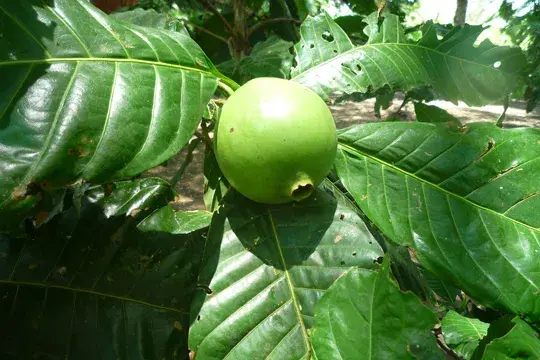
Photo: Wikimedia
Borojo is cheekily known as “Nature’s Viagra” or “Love Juice” thanks to its aphrodisiac properties, which have been well-known for centuries. It is also incredibly nutritious. In fact, borojo is so packed with nutrients, some doctors have claimed that growing the fruit on a global scale would solve the problem of malnutrition. Borojo can be eaten raw or in juices, jams and smoothies.
8. Curuba (Banana passion fruit)

Curuba is sometimes known as the “banana passionfruit” because of its yellow pulp with black seeds. It was initially exported only as pulp, but has since become so popular it is now sent whole to the USA, Europe and Japan. Curuba is full of powerful antioxidants known as proanthocyanidins, which help prevent against the damage caused by pollution and smoking. Curuba is usually eaten raw but it’s also delicious as a pie filling.
9. Lulo
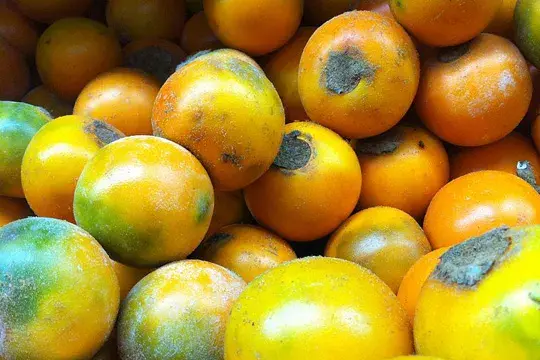
Photo: Wikimedia
Lulo is a tangy, citrus-like fruit. It boosts the immune system because it is full of Vitamin C, which stimulates white blood cell production (white blood cells defend against pathogens and infectious diseases). Colombia is lucky to grow lulo because it is a notoriously fragile fruit. It bruises very easily and is difficult to mass produce. It is one of Colombia’s favorite fruits for juices. In fact, in Cali there is a very famous juice called lulada, in which the main ingredient is lulo.
10. Níspero (Medlar)

Photo: Wikimedia
The loquat or medlar fruit, nispero in Colombia, is yet another super exotic fruits – said to have cancer fighting properties and to help maintain a healthy blood pressure. Nispero is also full of Vitamin A, which improves eye health and is good for teeth and bones too. Doctors are currently researching whether the fruit’s leaves can also help prevent skin cancer. Nispero can be eaten raw and it makes for an excellent juice or smoothie, but it’s also great as a jam or relish.
11. Guanábana
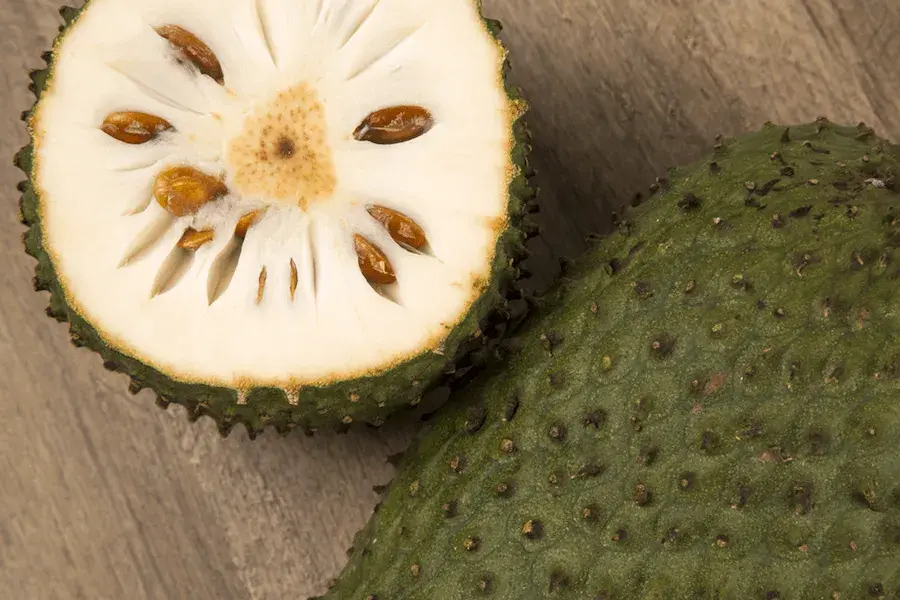
The soursop is a large strange-looking green fruit, with prickly spines covering its skin. To eat it, cut it in half and remove the seeds and pieces of the fruit with your hands. The edible part is a white pulp with a slightly sweet flavor and is commonly used to prepare smoothies and desserts.
Soursop trees are grown in tropical areas: within Colombia, mainly in Antioquia, Tolima, Caldas, Huila, Santander, Risaralda, and Valle. A newly planted tree might take up to 4 years to produce its first crop. Each tree has an approximate productive lifespan of 30 years. Soursops are a good source of fiber and vitamins. Currently, Colombia exports this fruit.
If delicious, exotic and healthy fruit is on your list, look no further than Colombia. If you enjoyed this article, please feel free to share it on Facebook, Twitter, LinkedIn, or any of your social networks.
Here’s your chance to visit this beautiful country and indulge in an amazing variety of exotic fruits and marketplaces.
You might also be interested:
 Welcome, you are in
Welcome, you are in 









